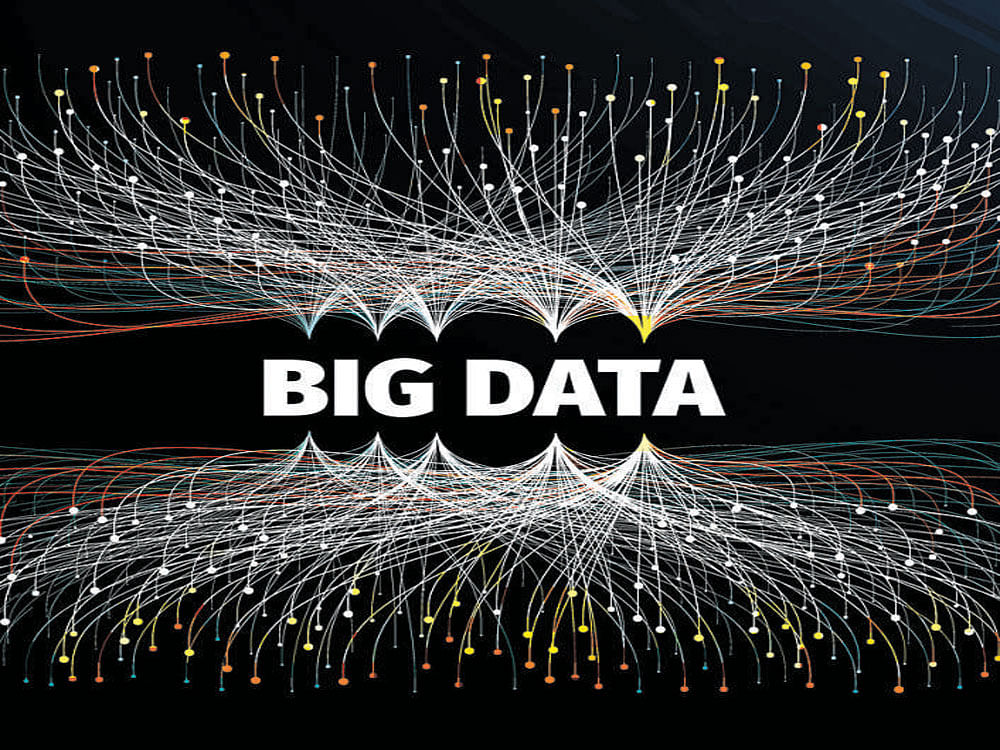
The last decade or so has seen a major change in technology growth, and a few words have become staple when it comes to answering how organisations are going to grow and work – Big Data, Machine Learning, and the Internet of Things (IoT).
Each of these technologies have seen a rapid growth in terms of both adoption and implementation, and constitute pretty much what’s driving our technology mission. On their own, they might seem like independent entities which have nothing in common, but at the centre lies the one thing that binds them all together — data.
Data is everywhere. In the age of the Internet, even more so. Every action, every click, every online interaction creates data points. Now, clubbing these data points and analysing them reveal some exciting and business-worthy information that can make a product or service from good to great. Data is nothing but information which can provide some valuable insights to companies on different aspects — from consumer behaviour, employee attrition, brand image to revenue forecast, predictive models and fraud detection.
We’ve all heard of Big Data and, as the name suggests, Big Data implies huge volumes of data that is unstructured and lies as a dump of information just waiting to be analysed. Big Data is helping us understand the minutiae details which were until now either not given much importance or were not extractable. Big Data analysis can reveal product performance, purchase patterns and all other information that can help an organisation better their product or service based on real data patterns. Big Data is like a goldmine with raw minerals — the important data is mixed with the not-so-important one. Analytics practices help process this data into a more readable and business-relevant form, using which high-level business decisions can be taken.
Enter the Internet of Things. With the advent of IoT, the world is connected in ways which were never thought of. Currently, IoT boasts of six billion connected devices that are capturing information and generating huge volumes of data — i.e. Big Data. The number of connected devices under the IoT umbrella is set to hit 75 billion by the year 2020, which is a massive 11.5X growth.
The ecosystem would include wearables, computers, smartphones, cameras, smart appliances, smart cars, and eventually, smart cities, with devices all connected and generating close to 30 million terabytes of data by 2020. This should give you a sense of the size of this data, which will be more massive than anything we have ever seen till now.
In the present scenario, IoT is already the biggest contributor to Big Data. With the projected growth rate of IoT devices, it is safe to assume that the size of this data will see a strong growth. Now, this data needs to be monitored, controlled, optimised and processed for creating autonomy. These processes make smart devices intelligent, and this has led to the rise of autonomous machines, and will also lead to intelligent autonomous systems. We are already seeing the growth and consolidation of this ecosystem.
Independently functioning
Autonomy is what will change the game, allowing machines to function on their own, with minimal to no human intervention. This is where Machine Learning comes in. With a step towards automation and autonomy, the devices need to be able to tackle every circumstance thrown their way, but pre-programming them for this is not possible. This would mean that the machines need to learn, adapt, and resolve things on their own without any explicit information or action fed to them. Machine Learning algorithms help in doing exactly that — adapt to changing circumstances and data and equip the device to decide on its own on what action to take. Essentially, this will try to take disruption in flow due to unpredictability out of the equation.
Now, all of this is on the function end of the spectrum. For professionals, this means that they are about to face a new era of data convergence — from analytics, IoT, Big Data and Machine Learning. We are already seeing cross-functional learning taking place within the analytics community. Data Analysts are picking up Big Data skills, data scientists are upskilling with Machine Learning, and business analysts are adding data visualisation to their repertoire. People working in the IoT space will need to hone their analytics skills because, as we have seen, data plays a huge component in any IoT project.
At the forefront, we will need people who can make sense of this network and deep dive to get insights that can alter the course of a business and help make decisions that are strongly data backed. It will no longer be enough to know how to work in one part of the analytics sector, but professionals will need to have a solid understanding of the entire ecosystem.
It is not about one or the other skill, it is about knowing which skill to use at which stage. This merging of skill requirement will see the rise of a new age of analytics professionals, who are both jacks of all trades as well as masters of their core skillsets.
Data will grow. Data will drive businesses. Data will give us direction. So, you see, with all the advancements we are seeing, data truly is at the centre of it all.
(The author is co-founder, Jigsaw Academy, Bengaluru)